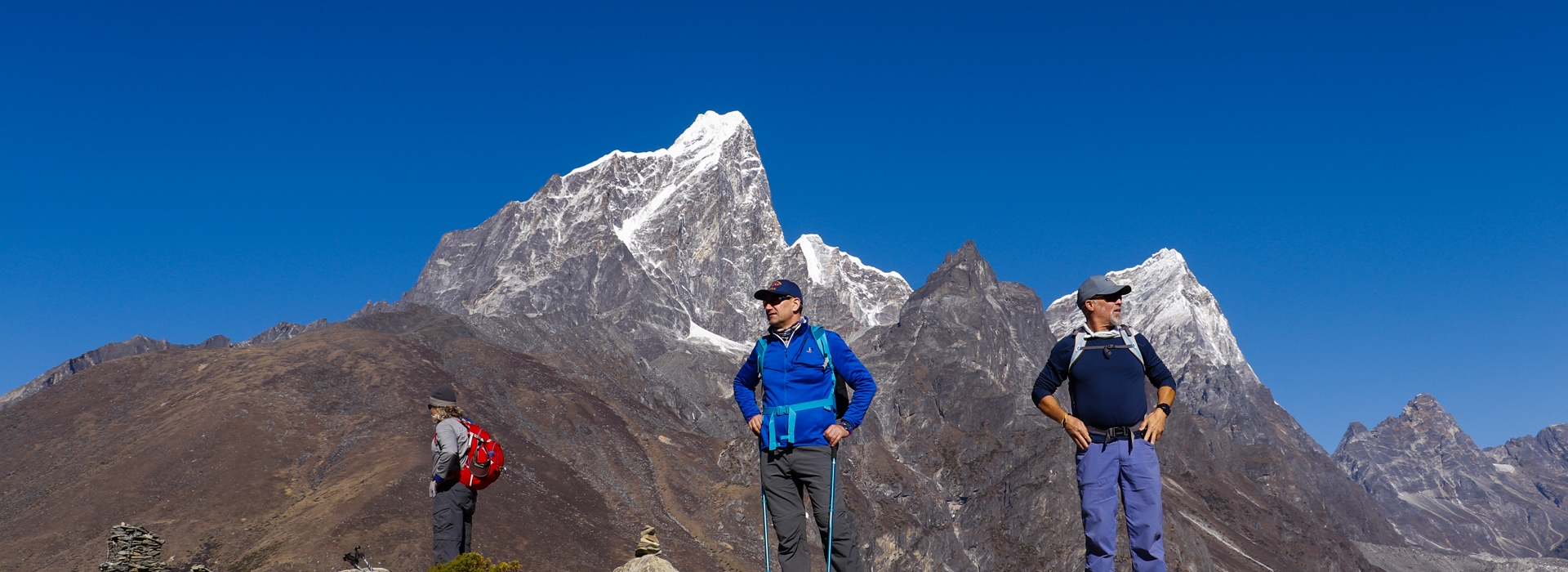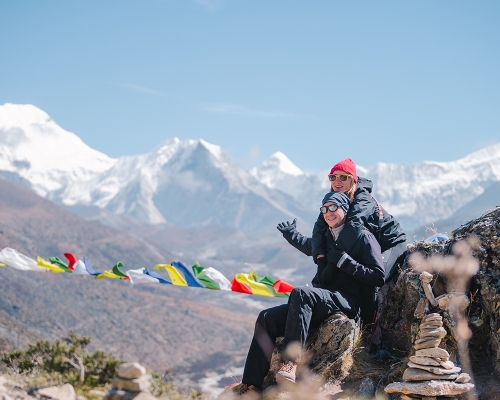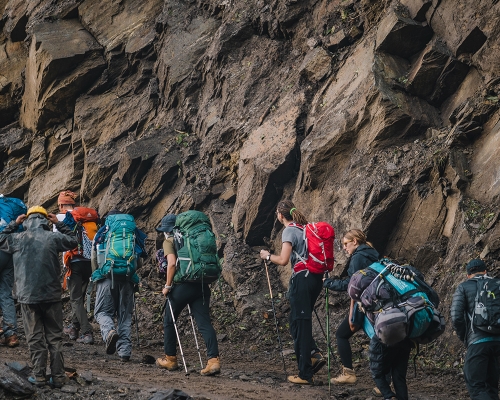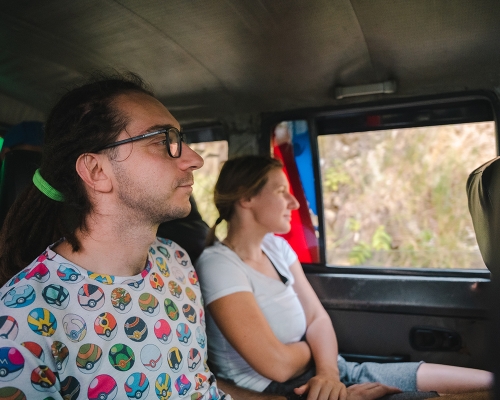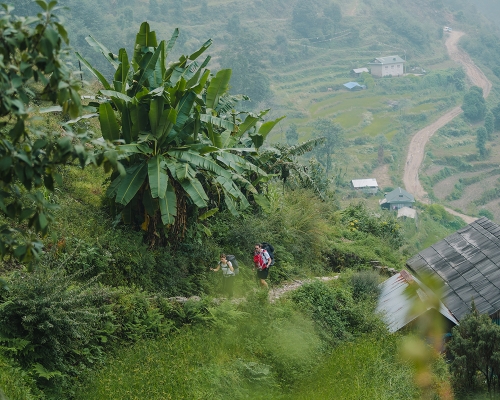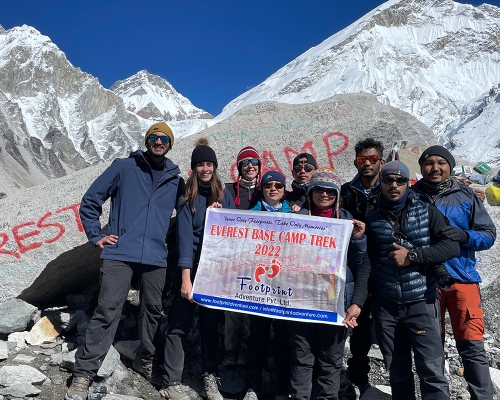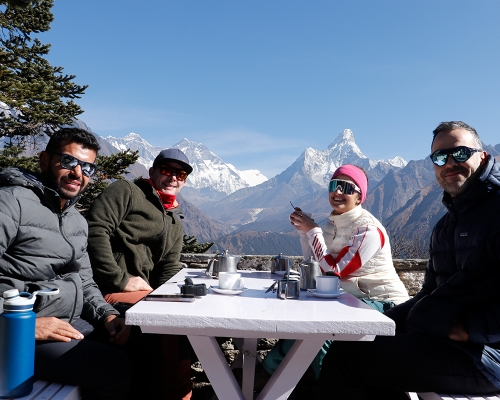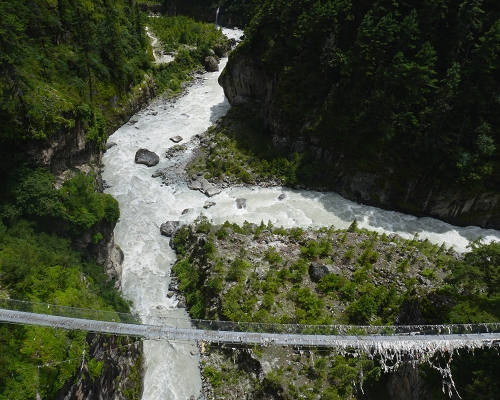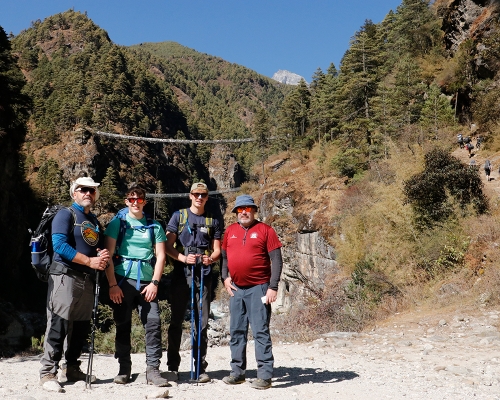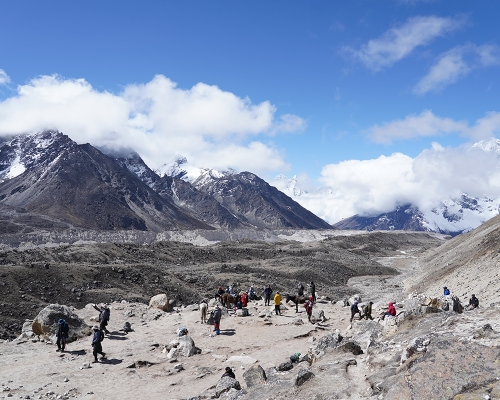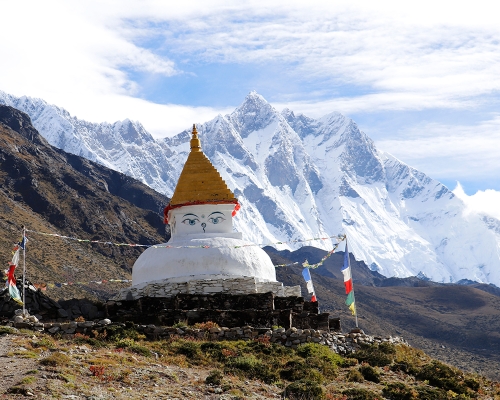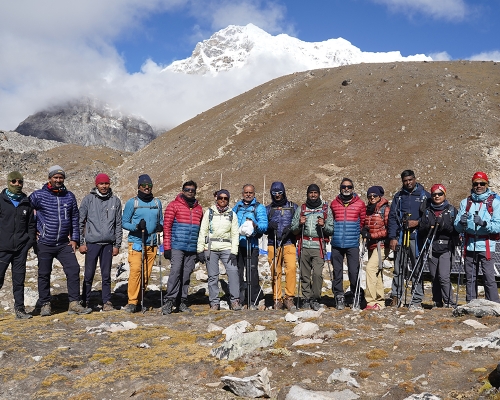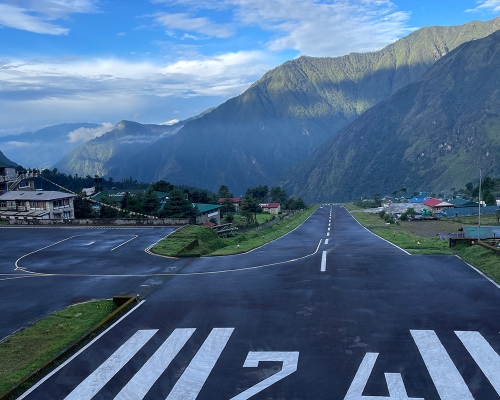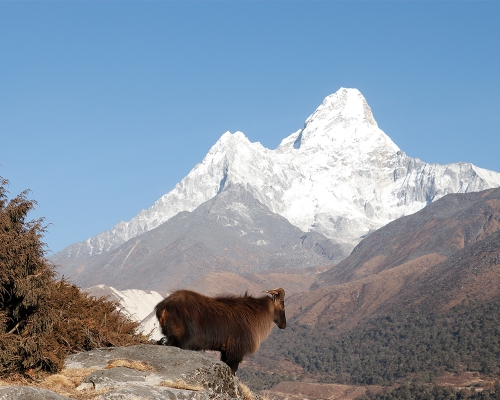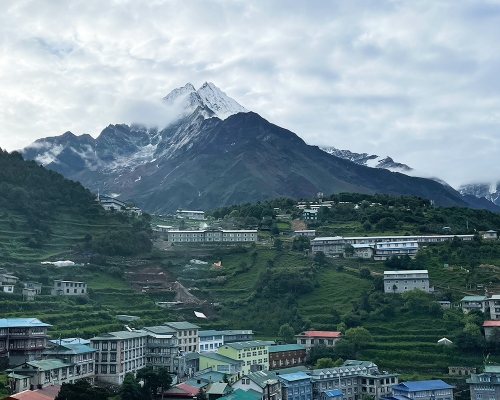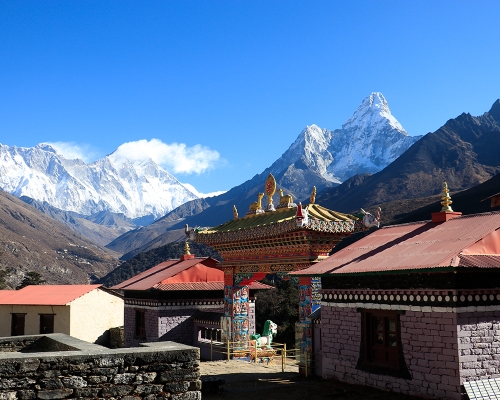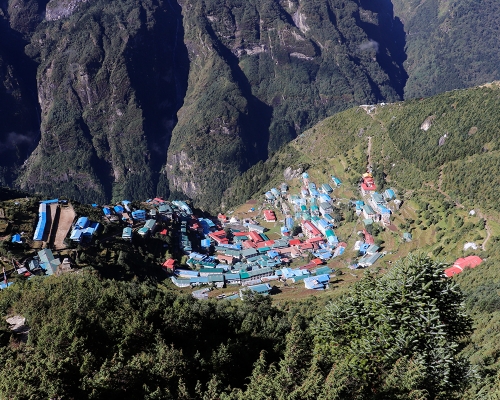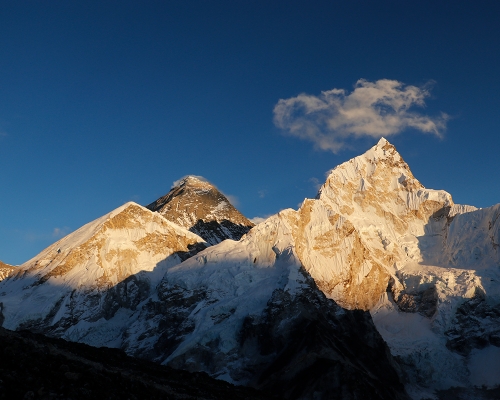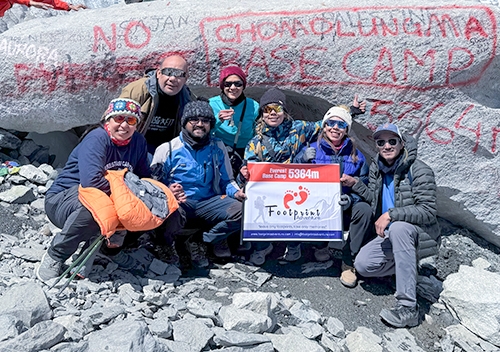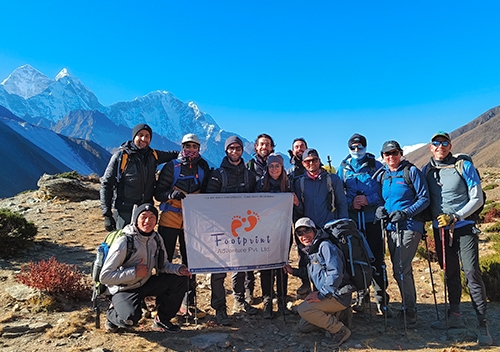Everest Base Camp Trek via Salleri Overview
The Everest Base Camp trek via Salleri is a great alternative for trekkers who want to avoid the crowds and unpredictable flight to Lukla airport. Rather than taking a flight, travelers take a road trip to Salleri from Kathmandu, which is an affordable and less crowded option to Everest Base Camp. This is the route you want to take if you're wanting to do an Everest trek without flying, while experiencing a little more of Nepal's local culture and scenery along the way.
After departing Kathmandu, you'll take an 8–9-hour road drive before you arrive at Salleri in the Solukhumbu region, where the trek starts. Yes, it takes a while to get there, but you'll have the opportunity to take in some stunning views of hills, rivers, and traditional villages along the way. The actual trek from Salleri will continue through some charming villages such as Taksindo, Paiya, and Surke, as you explore a different trek, which has not been traveled by many tourists.
There are many trekkers who choose the Everest Base Camp trek via Salleri because it's a budget Everest trek option. The road travel cuts down the costs associated with taking a flight to Lukla. Along the trail, you will have the opportunity to cross rivers, hike through dense, lush forests, travel along ridgelines, and enjoy the stunning views of mountains. After crossing the Sunkoshi River, you’ll enter the Okhaldhunga district, where you'll have some spectacular sights of Numbur Himal, Mt. Everest, Mt. Lhotse, and other mountain peaks you will see along the trek.
Continuing to Taksindo, we drive to Kharikhola and then trek to Ringmo Village. The route to Everest Base Camp is about 130 kilometers and takes approximately 18–19 days, depending on walking pace. From Ringmo, you will go through Paiya, Surke, and Phakding until you arrive at Namche Bazaar, the major gateway for most trekkers heading for Everest Base Camp.
As you trek, you will pass through beautiful rhododendron forests, cross suspension bridges, and take in stunning views of the Himalayas. The Salleri route to Everest Base Camp is a longer and more strenuous trek than the more well-known Lukla route because there is much more uphill and downhill terrain on this route. Trekkers should be prepared for the physical challenge of the Salleri route and be cautious of altitude sickness at high elevations.
The best part of the trek is reaching Everest Base Camp at 5,364 meters (17,598 feet), where climbers prepare to summit the highest mountain in the world. Trekkers will also climb Kala Patthar, which is a famous viewpoint where you have a panoramic view of Mt. Everest and other surrounding peaks. In general, Trekking to Everest Base Camp through the Salleri route is a great option for trekkers who are looking for a more off-the-beaten-path adventure but do not wish to sacrifice the opportunity to take in the splendor and grandeur of the Everest region. Here is a guidebook for you in case you are traveling to Nepal for the first time.
Highlights of Everest Base Camp Trek Via Salleri
- Explore UNESCO World Heritage Sites such as Pashupatinath Temple, Swayambhunath Stupa, Boudhanath Stupa, and Patan Durbar Square.
- Luxurious accommodation and services in Kathmandu
- Private and Comfortable drive to Salleri
- Experience the least explored and least crowded route to the Everest Base Camp
- Explore the unexplored beauty of the region in its natural form
- Acclimatization in the famous Sherpa capital - Namche Bazaar
- Trekking to the world’s famous base camp and exploring the Khumbu region from the closest distance
- Hiking to the world’s most popular viewpoint, Kala Patthar Viewpoint, and exploring the 360-degree panoramic views of the highest mountains like Mt. Everest, Mt. Nuptse, Mt. Ama Dablam, and so on.
- Experience the unique lifestyle and diverse culture of the Sherpa Community.
- Scenic flight back from Lukla to Kathmandu
- Cultural and Farewell dinner in Kathmandu
Major Highlights of Everest Base Camp Trek via Salleri
Scenic Overland Journey
The Everest Base Camp trek via Salleri offers an adventurous road journey. You will begin by traveling overland from Kathmandu to Salleri, which will take approximately 8–10 hours. The long drive is an experience in itself, providing you with breathtaking views of Nepal’s countryside. Along the way, you will view green hills, terraced farms, dense forests, and rivers like the Sun Koshi and Dudh Koshi, and get a glimpse of daily life in rural villages. This drive helps you get a feel of the cultural, political, and social landscape of the region extending before your trek begins. This drive also helps you avoid the overwhelming, unpredictable flight delays and cancellations out of Lukla and is therefore a more reliable and often less stressful travel option.
Lesser Crowded Off-Beaten-Path route
As the Salleri trek route does not involve the route from Lukla to Base Camp, the trails are generally a lot quieter and significantly more solitary. Going through the Solu-Khumbu region encourages each trekker to connect with the local Sherpa people in villages like Nunthala, Bupsa, and Surke, and embrace the famous Sherpa hospitality while you stay in local tea houses and completely immerse yourself in their customs. Spectacular views of mountains will surround you at any time, lots of forests and river crossings, with relatively few trekkers, offer a really peaceful experience. While the teahouse accommodation itself is not that different than trekking along the Everest side near Lukla, the isolation gives you a better chance to breathe and understand the local culture and pristine landscape. The trek is ideal for any individual or group that wishes to embrace the total wilderness of the world’s highest mountain range and enjoy trekking away from the crowd of other trekkers.
Who Should Trek to Everest Base Camp via Salleri?
The Everest Base Camp trek via Salleri is considered a physically demanding journey, having a moderate to a high degree of difficulty. The trek includes steep and rocky terrain and multiple uphill and downhill stretches. Hence, this trek is perfect for budget travelers seeking a challenging off-the-beaten-path adventure in Nepal. Altitude sickness can also be a problem due to the trek's high altitude. The trek requires decent stamina and fitness. Acclimatizing to higher elevations during the trek by spending some days at key points reduces the risk of altitude sickness.
It would be best if you also have durable and comfortable hiking shoes, warm and waterproof clothing, and a suitable backpack for the trek. For more information, check the packing & equipment list for trekking in Nepal. To be sure you're well enough for the trek, consult a doctor before starting. And most importantly, your Travel insurance should cover high-altitude trekking and emergency medical evacuation. For more information, we have a complete guidebook for the EBC trek, or you can directly contact us.
How to Prepare Yourself for the Everest Base Camp Trek via Salleri?
The EBC trip through Salleri is a challenging trek that needs a moderate to high level of fitness. Trekkers should be fit enough to climb uphill and downhill for at least 6-7 hours a day. It is advised to start regular exercise and endurance training many months before the walk to help you get ready. Trekkers should have the knowledge to acclimate at greater elevations to avoid altitude sickness. It is highly recommended to acclimate at Namche Bazar and Dingboche. The EBC trip via Salleri offers breathtaking views of the Himalayas and the chance to experience Sherpa culture and hospitality. You can check out the blog on fitness for the EBC trek.
Why Choose Footprint Adventure for Everest Base Camp Trek via Salleri in 2025/2026?
We are a locally-based trekking company with experience in providing trekking services to the Everest Base Camp trek via Salleri and other regions in Nepal. We take care of the transport, permits, accommodation, and overall logistics, so you can focus on trekking. We’ve designed this itinerary to be cost-effective and well-suited for your convenience, from our road travel plan to reducing the long, tiring travel days. The trekking route allows you to experience villages, monasteries, and local culture away from the traditional crowded trails.
Our guides will be there with you on the trek, provide daily briefings, check on your health, and provide information about the Sherpa culture. Footprint Adventure places emphasis on personal care and sustainable and responsible tourism, and works to keep you safe and supported while on our trekking adventure. If you are planning on the Everest Base Camp trek via Salleri in 2025/2026, contact us to develop a smooth, safe, and sustainable trekking experience.
When are the Best seasons for the Everest Base Camp Trek via Salleri?
The best time to do the Salleri route to Everest Base Camp is in spring (March-May) and autumn (September–November). The weather is often calm and dry during these months, with clear skies and great visibility. This creates excellent trekking conditions and enables breathtaking mountain views. In spring, the hills are covered in colorful rhododendron blooms, making the walk even more magnificent. Nonetheless, alpine weather can shift suddenly and unexpectedly. It's always a good idea to check the weather forecast before embarking on your journey and to be prepared for unforeseen weather circumstances.

